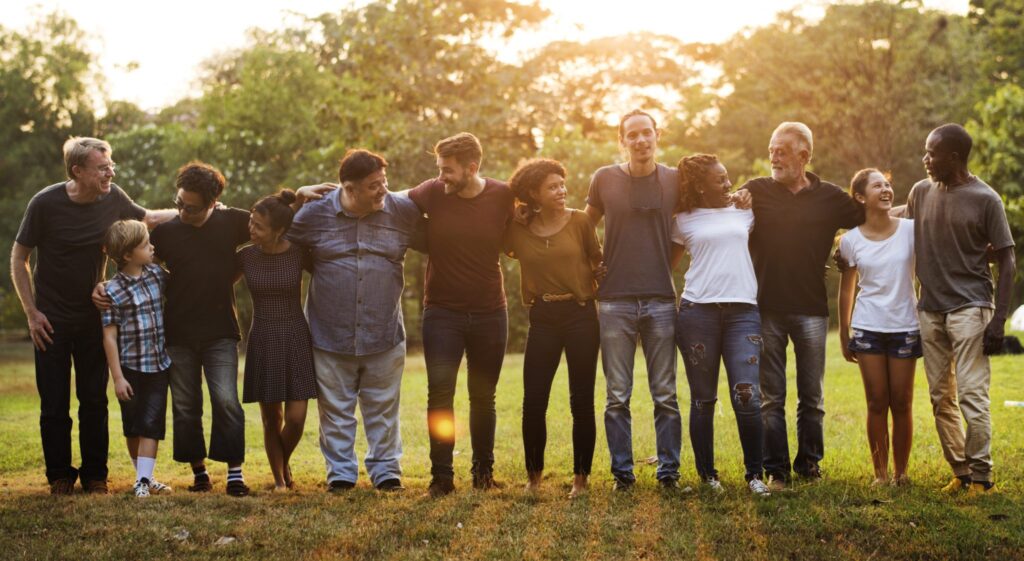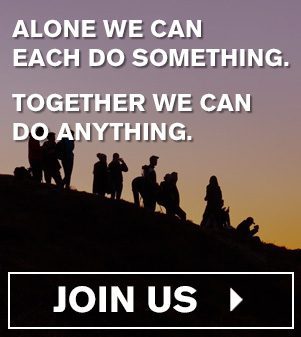When the Thrive Outside Initiative was launched in 2019, the Outdoor Foundation joined a movement with partners across the country to address outdoor equity barriers and help make the outdoors accessible for all. We knew that in order to enact real change, we needed a systemic approach that centers on equity, community ownership, data, and sustainability. Too many organizations work in isolation from one another. To make meaningful change, we needed a model that focuses on relationships between organizations and all community partners. Enter the collective impact model, the foundation upon which our Thrive Outside Initiative is built. Collective impact brings people together—in a structured way—to achieve social change.
What is Collective Impact? A network of community members, organizations, and institutions that advance equity by learning together, aligning, and integrating their actions to achieve population- and systems-level change.
Our work integrates mechanisms in which backbone organizations, service and program providers, and community partners can pool resources and insights as well as build relationships with each other. This boosts the capacity of every Thrive Outside Community and strengthens the full national network. The Outdoor Foundation and our Thrive Communities are committed to embodying the components and intentions of collective impact to address equity barriers to the outdoors.
What are Equity Barriers? Outdoor equity barriers are obstacles that hinder a person’s ability to access nature, green space, and parks. Read the Parks for Everyone Report from the San Diego Foundation, the backbone organization of Thrive Outside San Diego, to learn more.
The collective impact model was first introduced in 2011 and has continued to evolve over the past decade. As with the model itself, the Thrive Outside Initiative continues to evolve. We work every day to refine and strengthen our approach to better serve our communities.
Interested in learning more about the evolution of collective impact? Here are a handful of helpful resources that have been published over the past 10 years.
- Centering Equity in Collective Impact, By John Kania, Junious Williams, Paul Schmitz, Sheri Brady, Mark Kramer & Jennifer Splansky Juster
- Interview: Bringing an Anti-Racist Approach to Collective Impact, By Zea Malawa & Miya Cain
- Roundtable: Reflecting on Collective Impact for Place-Based Social Change, By Melody Barnes, Jennifer Blatz, Geoffrey Canada, Rosanne Haggerty & Erik Stegman
- 10 Dangers to Collective Impact, By Paul Schmitz
- Centering Racial Justice and Grassroots Ownership in Collective Impact, By Kat Allen, Rachel Stoler, Keyedrya Jacobs, Ilana Gerjuoy, Sage Shea & Leigh-Ellen Figueroa
- Using Data to Disrupt Systemic Inequity, By Jennifer Blatz
- Data in Collective Impact: Focusing on What Matters, By Justin Piff
- Power and Collective Impact in Australia, By Kerry Graham, Liz Skelton & Mark Yettica Paulson
- How Field Catalysts Accelerate Collective Impact, By Sylvia Cheuy, Mark Cabaj & Liz Weaver
- How Funders of Collective Impact Initiatives Can Build Trust, By Victor Tavarez, John Harper & Fay Hanleybrown
- Roundtable: Embracing Collective Impact at United Way, By Ayeola Fortune, Jill Pereira, Bill Crim & Regina Greer
- The Relational Work of Systems Change, By Katherine Milligan, Juanita Zerda & John Kania
- Working in Partnership With Opportunity Youth, By Monique Miles & Lili Allen
- The Leading Edge of Collective Impact: Designing a Just and Fair Nation for All, By Michael McAfee
- A Learning Agenda for Collective Impact, By Jennifer Splansky Juster & Cindy Santos





